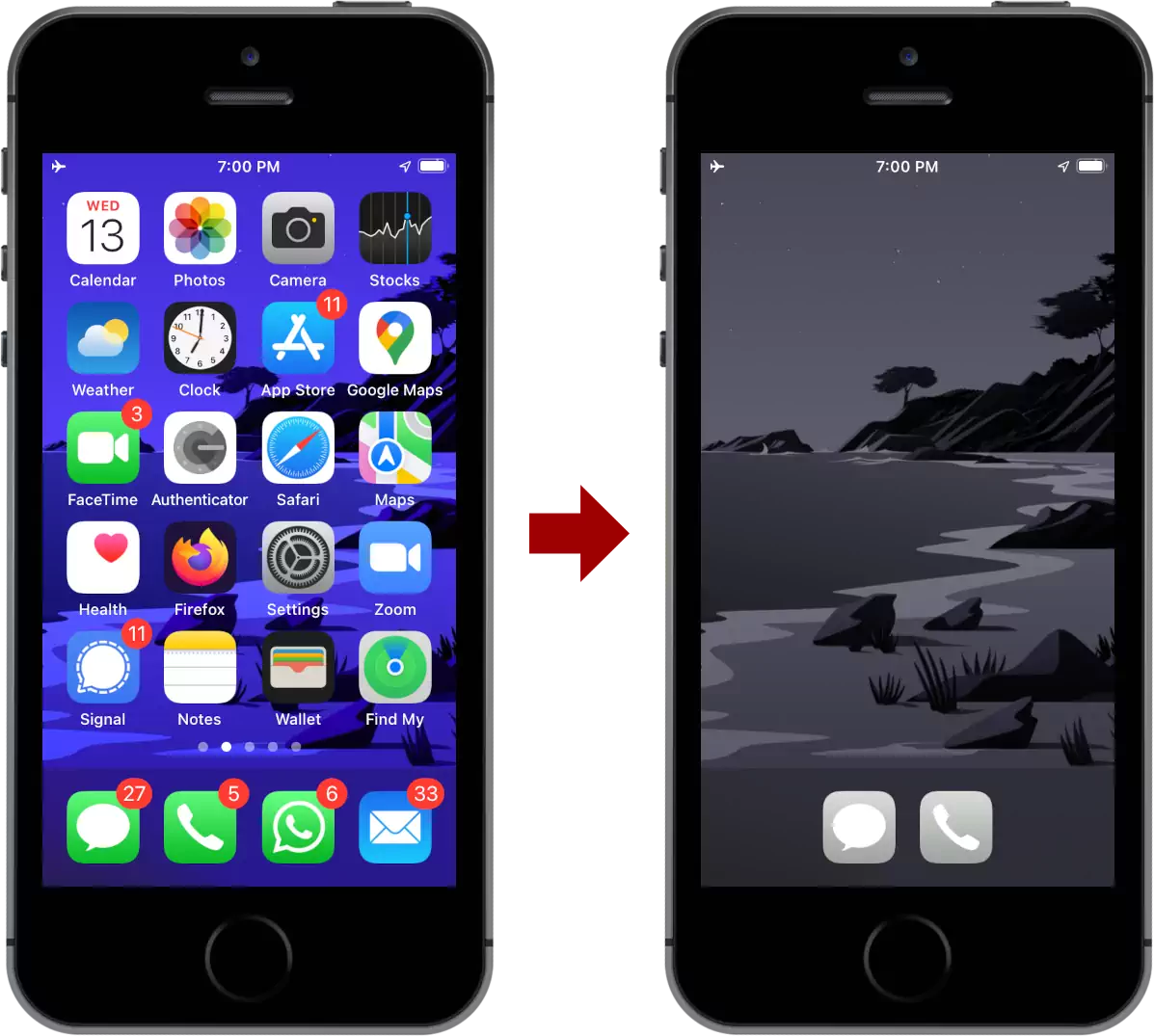Strategies to reduce screen time
Nudges — small changes to phone settings or the environment — can reduce smartphone use. In our research, people following these strategies reduced their screen time, felt less addicted to their phone, and improved their sleep quality (Olson et al., 2022).

Below we list the 10 strategies tested in our studies (with small modifications). The easier and likely more effective strategies are near the top:
1. Reduce notifications
Disable non-essential notifications (sounds, banners, and vibrations).
Reducing the frequency of notifications can reduce stress (Fitz et al., 2019).
Settings → Notifications
Settings → Apps & notifications → Notifications
2. Enable screen time tracking
Enable screen time tracking and set limits for particular apps.
Setting screen time limits for social media apps can reduce depression and loneliness (Hunt et al., 2018).
Screen time tracking: Settings → Screen time → Turn On Screen Time (if disabled)
Screen time tracking: Settings → Digital wellbeing & parental controls → Manage your data → Enable “Daily device usage”
App limits: Settings → Digital wellbeing & parental controls → Dashboard → (Choose app) → Tap hourglass
3. Keep your phone away while sleeping
Keep your phone on silent (vibrate off) and out of reach when going to bed (e.g., in another room or on the opposite side of the room).
Avoiding smartphone use at night may improve sleep and quality of life (Hughes & Burke, 2018).
4. Set your phone screen to greyscale
Greyscale can reduce screen time, smartphone addiction, and anxiety (Holte et al., 2020, 2021).
Settings → Accessibility → Display & text size → Colour Filters → Enable “Colour filters” → Choose “Greyscale”
Settings → Digital wellbeing & parental controls → Bedtime mode → Customise → Enable “Greyscale”
6. Make your phone less accessible
Keep your phone on silent (vibrate off), face down, out of sight, and out of reach when not in use throughout the day.
The mere presence of a smartphone may slightly reduce cognitive performance (Ward, Duke, Gneezy, & Bos, 2017).
7. Make your phone harder to unlock
Disable Touch ID or Face ID (i.e., the fingerprint/face scanner to unlock your phone); use a password instead.
Having a delay before accessing your phone can reduce usage (Kim, Park, Lee, Ko, & Lee, 2019).
8. Lower screen brightness
Turn down your phone’s brightness and change the colour warmth to filter out blue light (i.e., turn on the “night shift” feature).
Reducing light before bed may improve sleep (Chang et al., 2014).
Brightness: Settings → Display & brightness → Lower “Brightness”
Night shift: Settings → Display & brightness → Night shift → Enable “Scheduled”
Brightness: Settings → Display → Brightness
Night shift: Settings → Display → Night light
9. Move phone tasks to computers
If you can do the task on a computer, try to keep it on the computer (e.g. social media, web search, or e-mail).
Social media use primarily occurs on smartphones and may be more likely to produce habitual use compared to computers (Oulasvirta, Rattenbury, Ma, & Raita, 2011).
10. Leave your phone at home when you can
Leave your phone at home when you do not need it (e.g., when getting groceries or going to the gym).
Not having a phone accessible will prevent it from interfering with other activities such as in-person social interactions (Kushlev, Dwyer, & Dunn, 2019).
5. Hide social media apps
Hide social media and email apps (e.g., Tiktok, Instagram, Gmail, Outlook) in a folder off of the home screen (or even delete them).
Reducing social networking site use may improve well-being (Allcott, Braghieri, Eichmeyer, & Gentzkow, 2020).